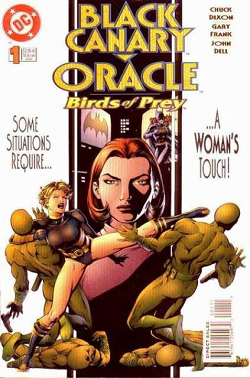So in GLAD TO MEET YOU FOR THE FIRST TIME AGAIN, I sketched out three types of "bonded ensembles" in which fictional icons could take part. Here I'll expand on those categories.
For all three, I used Robin the Boy Wonder as an exemplar of each ensemble-type, stating that:
--the "unbonded" ensemble in which he has brief, semi-regular teamups with Batgirl II--
--the semi-bonded ensemble, in which he gravitates to two different iterations of the TEEN TITANS (after leaving the Batman-and-Robin ensemble)--
--and the fully bonded ensemble, such as the Dick Grayson version of Robin enjoyed with Batman roughly from 1940 to 1970.
All of these bonds depend upon the principle of escalation, as described in the February 2023 essay INDIVIDUAL AND COLLECTIVE STATURE PT. 2. Most of the time the categories of bonded ensembles are determined by quantitative escalation, that is, how often the characters in the ensemble have appeared together. It's not impossible that a bonded ensemble could result from qualitative escalation, which is what determines the crossover-status of Walter Scott's IVANHOE At present no examples of bonded ensembles stemming from qualitative escalation occur to me.
In addition, I asserted that the Barbara Gordon Batgirl participated in two separate configurations.
In the comics, Batgirl was independent of the Batman-Robin team, so that her peripatetic guest-star appearances, both before and after she graduated to her own stature-series, so she was not in any ensemble at all, except for the brief unbonded ensemble she formed with Robin in the BATMAN FAMILY magazine. (This ensemble was not even constant for the run of the title, since some issues featured the two heroes enjoying separate adventures.)
However, when the television version of her character was created for the third season of BATMAN, she formed a fully bonded ensemble with both Batman and Robin for the duration of that season.
Roughly thirty years from her debut, though, Barbara Gordon, in her new incarnation as Oracle, formed an ongoing "semi-inclusive ensemble" with Black Canary in the first BIRDS OF PREY tryout. As Batgirl she had enjoyed her own series, and the Canary had received her first headliner series in 1992, if one chooses to ignore the Golden Age incarnation, with which the post-Crisis heroine was no longer coterminous. So theirs was a inclusive ensemble at first, as defined previously:
The Inclusive Ensemble is one in which the members of the team all originate in other features, and thus all of the starring characters have some degree of stature when they appear in the team feature, a stature independent of the ensemble feature.
However, over time the Birds team became more of a semi-inclusive team on the loose model of The Avengers, including some temporary members who no longer had their own features (The Dove from HAWK AND DOVE) or who debuted in the BOP feature, such as Misfit. Both versions of the team would still be "semi-bonded" given that there was some degree of stature-independence due to the continued presence of Barbara Gordon and Dinah Lance.
And it's propitious that I mentioned The Avengers, because that will be one of my subjects in Part Two.
Incidentally, the essay-title ICONIC BONDING riffs on a scientific term for a form of quantum entanglement:
Ionic bonding is the complete transfer of valence electron(s) between atoms. It is a type of chemical bond that generates two oppositely charged ions.




No comments:
Post a Comment